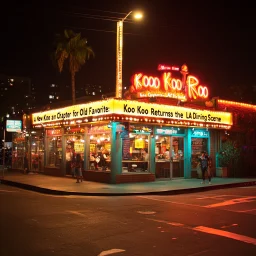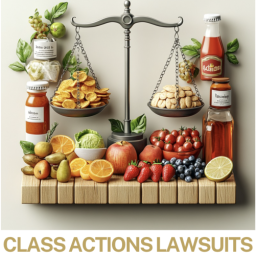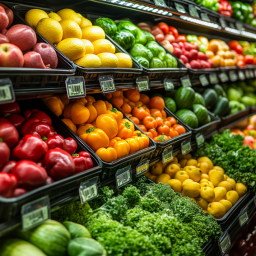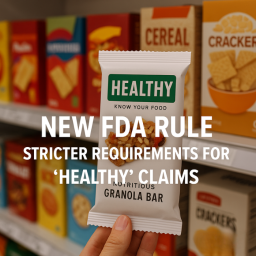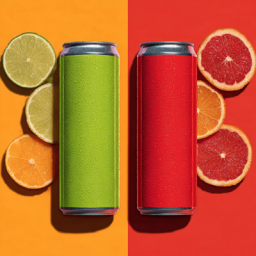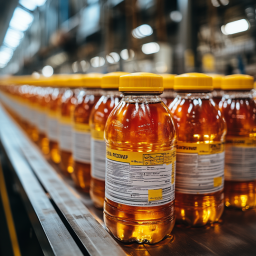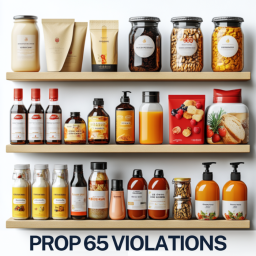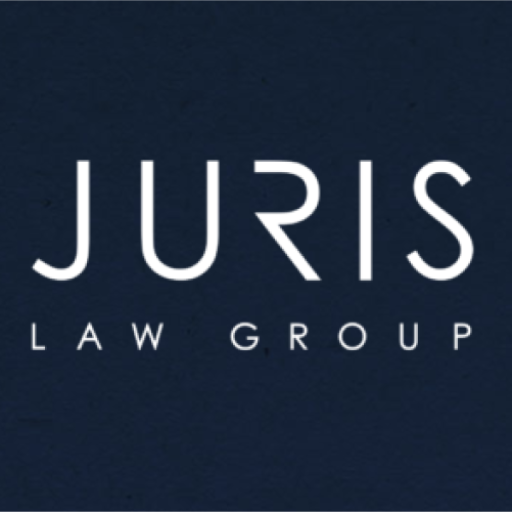
West Virginia Bans Artificial Food Dyes in Landmark Health Law
In a decisive step toward improving childhood health and public safety, West Virginia Governor Patrick Morrisey has signed House Bill 2354 into law. This new legislation prohibits the use of several artificial food dyes and preservatives in school meals and, ultimately, all food and drug products sold across the state.
By targeting a group of additives that have long been under scrutiny for their potential health risks—particularly among children—West Virginia is taking a bold stand in the national conversation around food safety and regulatory reform. The state’s action has sparked interest from public health advocates, school administrators, food manufacturers, and legal experts watching how this law may influence broader regulatory changes across the U.S.
What the Law Bans and When
House Bill 2354, passed with bipartisan support, focuses on seven synthetic food dyes and two preservatives commonly found in snacks, cereals, drinks, and even over-the-counter medications. These substances are:
- Red Dye No. 3
- Red Dye No. 40
- Yellow Dye No. 5
- Yellow Dye No. 6
- Blue Dye No. 1
- Blue Dye No. 2
- Green Dye No. 3
- Butylated Hydroxyanisole (BHA)
- Propylparaben
Phase 1: Schools First
Beginning August 1, 2025, these additives will be banned from all public school nutrition programs in West Virginia. This includes breakfast and lunch meals, vending machines, and any on-campus food sales.
Phase 2: Full Market Ban
Starting January 1, 2028, the law will expand to prohibit the sale of any food or drug products containing the listed dyes and preservatives throughout the entire state. Retailers, manufacturers, and distributors will be required to ensure compliance, or face potential enforcement action under the new statute.
This phased timeline allows companies to reformulate their products, adjust labeling, and implement inventory changes—an approach that balances urgency in protecting public health with practical industry accommodation.
Why These Ingredients Were Targeted
The law is based on mounting evidence linking synthetic food dyes to adverse health effects, especially in children. Studies have pointed to concerns ranging from behavioral problems and learning difficulties to allergic reactions and cancer risks.
Neurodevelopmental Concerns
Artificial food dyes like Red 40, Yellow 5, and Yellow 6 have been implicated in hyperactivity and attention-deficit/hyperactivity disorder (ADHD)-like symptoms in children. A landmark 2007 study from the University of Southampton showed a strong correlation between certain dyes and behavioral changes in children. The California Office of Environmental Health Hazard Assessment (OEHHA) has also recognized these risks.
Carcinogenic Warnings
Red Dye No. 3, banned from cosmetics since 1990 by the FDA due to animal studies linking it to thyroid tumors, is still legal in foods. This inconsistency has been widely criticized by consumer health groups, who argue for its complete ban.
Endocrine Disruption
Preservatives like Propylparaben and BHA are known endocrine disruptors that interfere with hormone function. The European Union has placed strict limits on their use, further fueling concerns in the U.S. over their continued presence in children’s food and medicines.
Governor Morrisey’s Public Health Platform
Governor Patrick Morrisey, who has prioritized health initiatives under his “Make America Healthy Again” campaign, sees this law as a pivotal move. In a statement, he said:
“West Virginia ranks at the bottom of many public health metrics, which is why there’s no better place to lead the Make America Healthy Again mission. By eliminating harmful chemicals from our food, we’re taking steps toward improving the health of our residents and protecting our children from significant long-term health and learning challenges.”
This legislative push follows a nationwide movement among parents, educators, and pediatricians advocating for cleaner school meals and improved nutrition standards. West Virginia’s decision is expected to spark similar proposals in other states.
Legal Implications for Food Manufacturers and Retailers
The upcoming 2028 ban on the sale of products containing these additives will carry regulatory and compliance obligations for:
- Manufacturers distributing food and beverages into the West Virginia market
- Retailers selling products on shelves, in stores, and online
- Pharmaceutical brands producing over-the-counter drugs that include the restricted dyes or preservatives
Businesses that fail to comply could face state-level enforcement under West Virginia’s food safety and consumer protection statutes. Depending on how the state implements penalties, this may include product recalls, civil fines, or restrictions on future sales.
For companies seeking to avoid legal exposure, this is the time to review formulations, revise labeling, and consult with regulatory counsel. Working with a food labeling compliance attorney or a CPG brand lawyer experienced in food law and state-level consumer regulations is critical.
National Context and Consumer Trends
West Virginia is not alone in reconsidering the safety of food dyes. In recent years:
- California has passed a law banning four food additives (Red 3, Propylparaben, Potassium Bromate, and Brominated Vegetable Oil), which will take effect in 2027.
- The European Union has stricter laws governing artificial dyes and often requires warning labels or bans certain ingredients outright.
- U.S. consumers, particularly millennial and Gen Z parents, are increasingly demanding transparency and “clean label” products.
Advocacy groups such as the Environmental Working Group (EWG) and Center for Science in the Public Interest (CSPI) continue to push for federal reforms. The FDA has acknowledged public concern but has yet to issue comprehensive restrictions beyond cosmetic bans.
Q&A: What You Need to Know About West Virginia’s Food Dye Ban
Question 1: Why is West Virginia banning certain food dyes and preservatives?
Answer 1:
West Virginia is banning seven food dyes and two preservatives due to increasing scientific evidence linking them to health risks, especially in children. These risks include behavioral issues such as hyperactivity, learning difficulties, allergic reactions, and in some cases, carcinogenic effects. The state’s leadership has prioritized these bans to improve overall public health and childhood development outcomes, particularly in schools where these ingredients are widely consumed.
Question 2: Which products will be affected by the ban—and when?
Answer 2:
The ban will affect two major categories of products:
- School nutrition programs, where the dyes and preservatives will be prohibited starting August 1, 2025.
- All food and drug products sold statewide, with enforcement beginning January 1, 2028.
This includes snacks, candy, cereals, beverages, and even over-the-counter drugs that contain the listed additives. Retailers, manufacturers, and pharmaceutical companies will need to reformulate or replace non-compliant products before the effective dates.
Question 3: How does this law compare to regulations in other states or countries?
Answer 3:
West Virginia joins California and a growing number of U.S. states reconsidering the safety of artificial food additives. California recently passed a similar law banning Red 3 and other controversial ingredients, with enforcement beginning in 2027. In the European Union, stricter laws have been in place for years, often requiring warning labels or banning such dyes altogether.
This law reflects a broader consumer-driven trend in the U.S. toward transparency, food safety, and “clean label” product formulations. Legal experts expect additional states to propose similar legislation, making regulatory compliance more complex for national brands.
Question 4: What legal obligations will food manufacturers and retailers face?
Answer 4:
Manufacturers and retailers distributing products in West Virginia must ensure their items do not contain the banned dyes and preservatives by the applicable dates. This includes:
- Reformulating products to remove restricted ingredients
- Updating packaging and ingredient disclosures
- Ensuring inventory compliance at the retail level
Failure to comply could result in product recalls, civil penalties, or even loss of market access in West Virginia. Companies are encouraged to consult with legal counsel well ahead of the 2025 and 2028 deadlines. A CPG brand attorney or food labeling compliance lawyer can help businesses mitigate liability and develop a regulatory strategy.
Question 5: Will this law affect national supply chains or only West Virginia?
Answer 5:
While the law technically applies only to products sold within West Virginia, its ripple effect may be national. Many food and beverage companies operate with unified national supply chains, and reformulating products for just one state can be costly. As a result, some brands may opt to reformulate products across all markets to maintain consistency, avoid legal risk, and appeal to health-conscious consumers.
Moreover, this kind of state-level legislation may pressure federal regulators to revisit existing rules on food dyes and preservatives. Legal experts anticipate that West Virginia’s law could accelerate national reform and drive a broader shift in food safety regulation.
Final Thoughts: The Future of Food Labeling and Public Health
West Virginia’s new food dye ban is a powerful example of how state legislation can reshape national food policy. It recognizes that childhood exposure to harmful chemicals is not just a dietary issue—it’s a public health imperative.
With a clear timeline and well-defined scope, House Bill 2354 gives the food industry time to adapt, but it also sends a strong message: products made for children should not contain ingredients known to affect their behavior, learning, or long-term health.
For brands looking to future-proof their products, the time to act is now. Reformulating, relabeling, and seeking regulatory clarity will not only ensure legal compliance but also align your brand with evolving consumer values.
At Juris Law Group, P.C. we support food, beverage, and consumer brands through regulatory strategy, labeling law, compliance, and litigation prevention.
